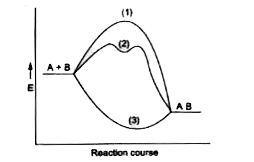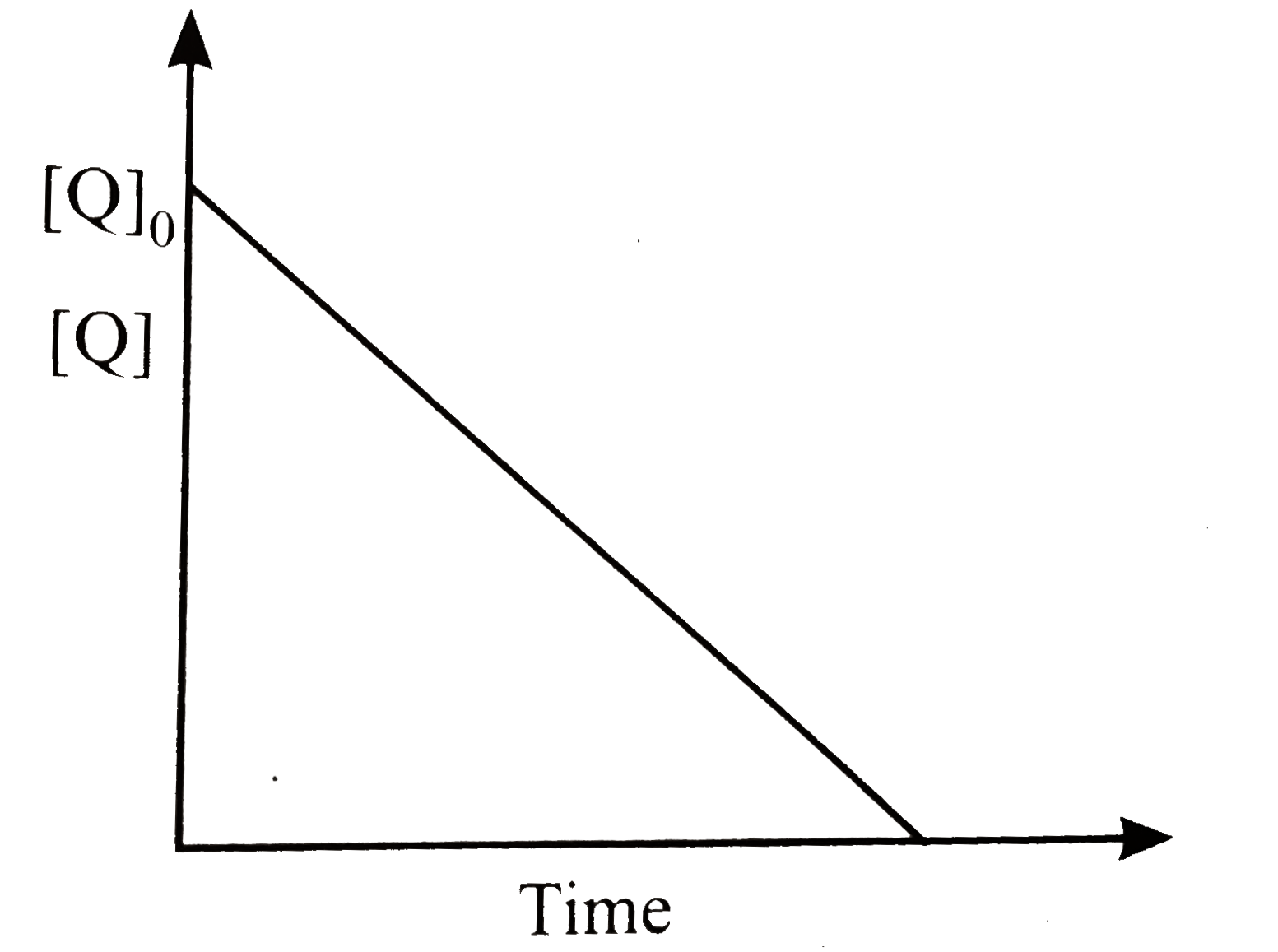Complete Solutions to OBJECTIVE PROBLEMS of chapter CHEMICAL KINETICS of Class 12 book with complete answers and questions
| Class 12 | CHEMISTRY |
| Chapter | CHEMICAL KINETICS |
| RC MUKHERJEE | OBJECTIVE PROBLEMS |
| Number Of Questions | 51 |
| Academic Year | 2023-24 |
If the volume of a closed vessel in which the equilibrium `2SO_(2)+O_(2)hArr 2SO_(3)` is set in is halved , the rate of
03:37View SolutionThe rate of the elementary reaction,
`2NO+O_(2)rarr 2NO_(2)`, when the volume of the reaction vessel is doubled:01:24View SolutionRate of which reaction increase with temperature:
02:51View SolutionThe specific rate constant of a first order reaction depends on the
00:43View SolutionIf the rate constant k of a reaction is `1.6 times 10^–3(mol//l)(min^–1)` . The order of the reaction is:
02:06View SolutionIf for any raction , th rate constant is equal to the rate of the reaction at all concentrations, the order is
01:37View SolutionWhich of the following procedures will lead to a change in the rate constant k of a reaction ?
01:27View SolutionIf a reaction with `t_(1//2)=69.3` seconds , has a rate constant value of `10^(-2)` per second , the order is
01:13View SolutionThe specfic reaction rate constant for a first order reaction is `1xx10^(-3) s^(-1)` .If the initial concentration of the reactant is `0.1 ` mole per litre , the rate is
01:23View Solutionk for a zero order reaction is `2xx10^(-2)` mol . `L^(-1)s^(-1)` . If the concentration of the reactant changed into the product .Now if the same reaction is carried out with an initial concentration of 5 moles per litre . The percentage of the reactant changing to the product is .
02:35View SolutionA first order reaction is carried out with an initial concentration of 10 moles per litre and 75 % of the reactant changing to the product if t 50% is 20 min.
02:06View SolutionWhich of the following curves represents a third order reaction ?
04:34View SolutionWhich of the following curves represents a zero order reaction ? [`(a-x)` =reactant concn.]
02:39View Solution75 % of a first order reaction was completed in 32 min . When was 50 % of the reaction completed ?
01:57View SolutionIf doubting the initial concentrations of a reactant doubles `t_(1/2)` of the reaction , the order of the reaction is
02:01View SolutionFor a given reaction the logarithm of the concentration of the reactant plotted against time gave a straight line with negative slope . The order of the reaction is
02:26View SolutionThe concept of `t_(1/2)` is useful for the reactions of
01:18View SolutionThe half - life for a given reaction was halved as the initial concentration of a reactant was doubled . The order for this component is
01:55View SolutionThe rate constant fro a second order reaction is `8 xx 10^(-5) M^(-1) "min"^(-1)`. How long will in take a `1 M` solution to be reduced to `0.5 M`
01:54View SolutionThe rate for a first -order reaction is `8 xx10^(-5) M^(-1)min^(-1)`. How long will it take to complete 50%,if intial concentration is 2M.
View SolutionWhat fraction of a reactant remains after 40 min if `t_(1/2)` is 20 min and if Reaction is of first order?
01:35View SolutionFor a given reaction, the half-life period was found to be directly proportional to the initial concentration of the reactant. The order of reaction is
02:06View SolutionFrom different sets of data of `t_(1//2)` at diifferent initial concentrations say 'a' for a given reaction, the `[t_(1//2)xxqa]` is found to be constant. The order or reaction is :
01:39View SolutionA catalyst increases the rate of a chemical reaction by
02:30View SolutionThe energy of activation of a forward reaction is 50 kcal . The energy of activation of its backward reaction is
01:55View SolutionThe rate constant , the activation energy and the Arhenius parameter of a chemical reaction at `25^(@)C` are `3xx10^(-4) s^(-1) , 104.4 " kJ mol"^(-1) and 6xx10^(14) s^(-1)` respectively . The value of the rate constant as `T to oo` is
02:21View SolutionWhich of the following statements is wrong about reactions ?
01:52View SolutionThe temperature coefficient of a reaction is 2 . The rate of this reaction , on raising the temperature by `25^(@)` ,shall increase by
01:59View SolutionThe rate constant of a reaction , `A to `Product , with initial reactant concentration a mole /L ,is k mole /L/min. The `t_(1//2)` for the reaction is equal to
02:33View SolutionThe rate constant of a reaction , `A to ` Product ,with initial reactant concentration a mole/L ,is k L/mole /min .The `t_(1//2)` for the reaction is equal to
View SolutionThe rate of reaction doubles when the concentration of the reactant is increased four times , The order is
01:44View SolutionWhen the concentration of a reactant , A in a reaction `A to ` Products , is doubled the rate of the reaction increases seven times , the order of the reaction is between
03:07View SolutionWhen the concentration of a reactant ,`A to` products , is doubled In first order reaction, the increase in the rate of reaction cannot be more than
01:05View SolutionFor a second -order reaction of the type ` underset (a-a) overset (a) (2A) to underset (x/2)("Products")` the rate law is given by rate = `-1/2 (d(a-x))/(dt) = + (dx/2)/(dt) =k_(2)(a-x)^(2)`
The integrated rate law will be .View Solution50 % of a zero order reaction completes in 10 minutes .100 % of the same reaction shall complete in
02:31View SolutionThe rate constant ,k, of a second -order reaction ,`A to ` Products is given by
`k= 1/t {x/(a(a-x))}`
The ratio `t_(3//4)//t_(1//2)` is eual to02:53View SolutionIn which of the reaction of the following orders the molecularity and order can never be same ?
02:38View SolutionWhich of the following curves represent(s) a zero-order reaction?
View SolutionA plot of reactant concentration versus time for a reaction is a straight line with a negative slope giving the rate constant, and the intercept, giving the initial concentration of the reactant. The order of the reaction is
01:48View SolutionConisder the chemical reaction
`N_(2)(g) + 3H_(2)(g) rarr 2NH_(3)(g)`
The rate of this reaction can be expressed in terms of time derivatives of the concentration of `N_(2)(g), H_(2)(g)`, or `NH_(3)(g)`. Identify the correct relationship among the rate expresisons.01:31View SolutionIf the rate constant for a reaction repreasented by `2HI rarr H_(2)+I_(2)` is denoted by k then for the same reaction if represented by
`HI rarr (1)/(2) H_(2)+(1)/(2)I_(2)`, the rate constant shall be equal to05:22View SolutionFor the chemical reaction of the type
`2A to 1/2B `
the correct relationship amongst the rate expressions is03:03View SolutionFor what type of the following reactions is the law of mass action, never obeyed?
01:35View SolutionIf the rate law of a reaction `n(A) to B ` is expressed as
`underset("mol/L/s")(Rate)=-1/n (d[A])/(dt) =+(d[B])/(dt)=k[A]^(x)`
The unit of the rate constant will be02:16View SolutionThe exothermic reaction between substances A and B is presented in the plot below. Catalyat-induced preparation of the substance AB follows the pathway
 03:12View Solution
03:12View SolutionWhich curve corresponds to the temperature dependence of the rate R of a simple one-step reaction?
View SolutionFor the first order reaction
`2N_(2)O_(5)(g) rarr 4NO_(2)(g) + O_(2)(g)`05:04View SolutionThe rate of a reaction doubles when its temperature changes form `300 K` to `310 K`. Activation energy of such a reaction will be:
`(R = 8.314 JK^(-1) mol^(-1) and log 2 = 0.301)`02:46View SolutionIn the reaction, `P+Q rarr R+S`
the time taken for `75%` reaction of `P` is twice the time taken for `50%` reaction of `P`. The concentration of `Q` varies with reaction time as shown in the figure. The overall order of the reaction is
 07:26View Solution
07:26View SolutionThe initial rate of hydrolysis of methyl acetate (1M) by a weak acid `(HA,1M)` is `1//100th` of that of a strong acid `(HX, 1M),` at `25^(@)C`. The `K_(a)(HA)` is
07:40View SolutionFor the non-stoichiometric reaction `2A +B rarr C+D`, The following data were obtained in three separate experiments, all at 298 K.

The rate law for the formation of C is:03:30View Solution
OBJECTIVE PROBLEMS questions and complete solutions for chapter CHEMICAL KINETICS of BHARATI BHAWAN CHEMISTRY (HINGLISH) of Class 12
